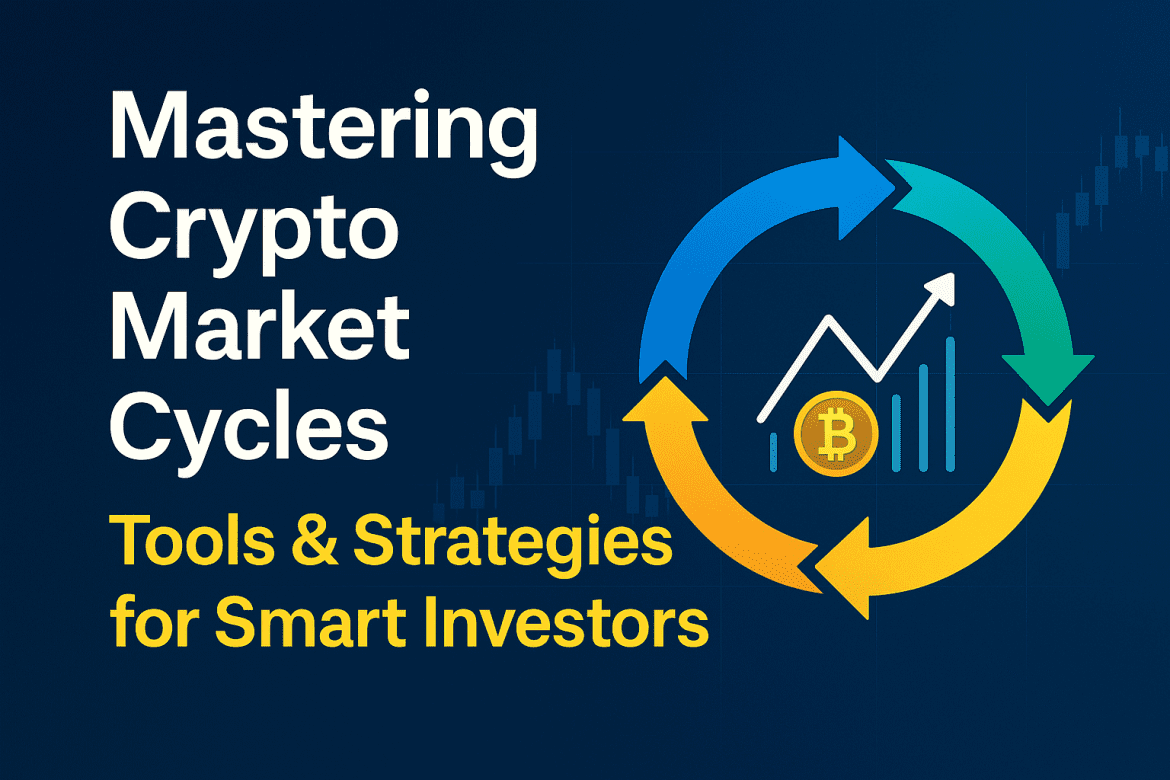If you’ve been in crypto long enough, you’ve likely experienced the euphoric highs of a bull market and the gut-wrenching lows of a bear crash. For mid-level investors, learning how to navigate these crypto market cycles is key to growing — and protecting — your portfolio.
Let’s break down the strategies and tools you need to stay one step ahead.
Understanding the Crypto Market Cycle
The crypto market, like traditional markets, moves in cycles:
- Accumulation Phase – Prices are low, and sentiment is negative, but smart money starts buying.
- Uptrend / Bull Market – Optimism returns, retail interest spikes, and prices surge.
- Distribution Phase – Early investors take profits, and sentiment becomes euphoric.
- Downtrend / Bear Market – Prices crash, fear dominates, and retail investors exit.
Recognizing where we are in the cycle is essential to avoid buying tops or panic-selling bottoms.
Strategy 1: Think in Cycles, Not Days
Crypto moves fast — but don’t get caught up in the daily noise. Zoom out.
Ask yourself:
- Are altcoins outperforming Bitcoin?
- Is volume increasing on DEXs or centralized exchanges?
- Are we seeing meme coins explode? (Often a late-cycle sign)
Use macro trends to adjust your risk exposure:
- Early Bull: Focus on blue-chip coins like BTC and ETH.
- Mid Bull: Ride momentum with strong altcoins.
- Late Bull: Rotate into stablecoins and reduce exposure.
Strategy 2: Use On-Chain and Sentiment Tools
Mid-level investors should level up by using on-chain metrics and market sentiment data.
Useful Tools:
- Glassnode / CryptoQuant – Track wallet activity and exchange inflows/outflows.
- Santiment – Social media sentiment and on-chain data.
- Fear & Greed Index – A Quick snapshot of market emotion.
- LunarCrush – Analyzes social trends around specific coins.
Keep an eye on:
- Exchange reserves decreasing → Bullish (less selling pressure)
- Whale accumulation increasing → Smart money moving in
- Extreme greed/fear → Possible reversal points
Strategy 3: Adjust Your Portfolio Dynamically
Use the cycle to rebalance your portfolio, not just HODL blindly.
Example:
- Bull market? Consider trimming profits on 2x-5x coins.
- Bear market? Accumulate fundamentally strong assets (BTC, ETH, L2s).
- Sideways market? Focus on yield: staking, farming, or liquid staking.
Stablecoins are a powerful tool, too — not just to exit the market but to deploy when the time is right.
Strategy 4: Follow Smart Money & Market Narratives
Crypto narratives often drive micro-cycles inside the larger cycle. Watch for shifts like:
- “AI + Blockchain”
- “Restaking and EigenLayer hype”
- “Layer 2 Season”
- “Memecoin Mania”
Also, track wallet movements from known VCs, developers, or insiders using tools like:
- Arkham Intelligence
- Nansen.ai
Being early to a narrative can multiply returns, but timing your exit is just as crucial.
Final Tip: Know When to Do Nothing
Sometimes, the best move is to sit out.
When the market feels irrational, funding rates are high, and everyone shouts “to the moon!” — that’s your cue to step back.
Conclusion
Mastering the crypto market cycle isn’t about predicting the future — it’s about understanding patterns, using data-backed tools, and managing your psychology.
Build a strategy, stay objective, and always zoom out before making moves.
Remember: The market rewards patience and preparation, not panic.

 Bitcoin
Bitcoin  Ethereum
Ethereum  Tether
Tether  XRP
XRP  USDC
USDC  TRON
TRON  Lido Staked Ether
Lido Staked Ether  Dogecoin
Dogecoin  Figure Heloc
Figure Heloc